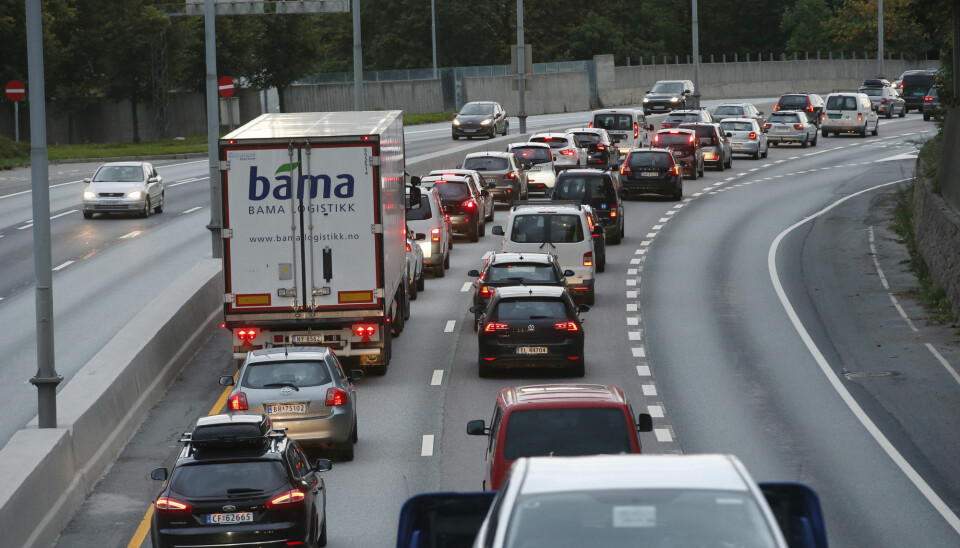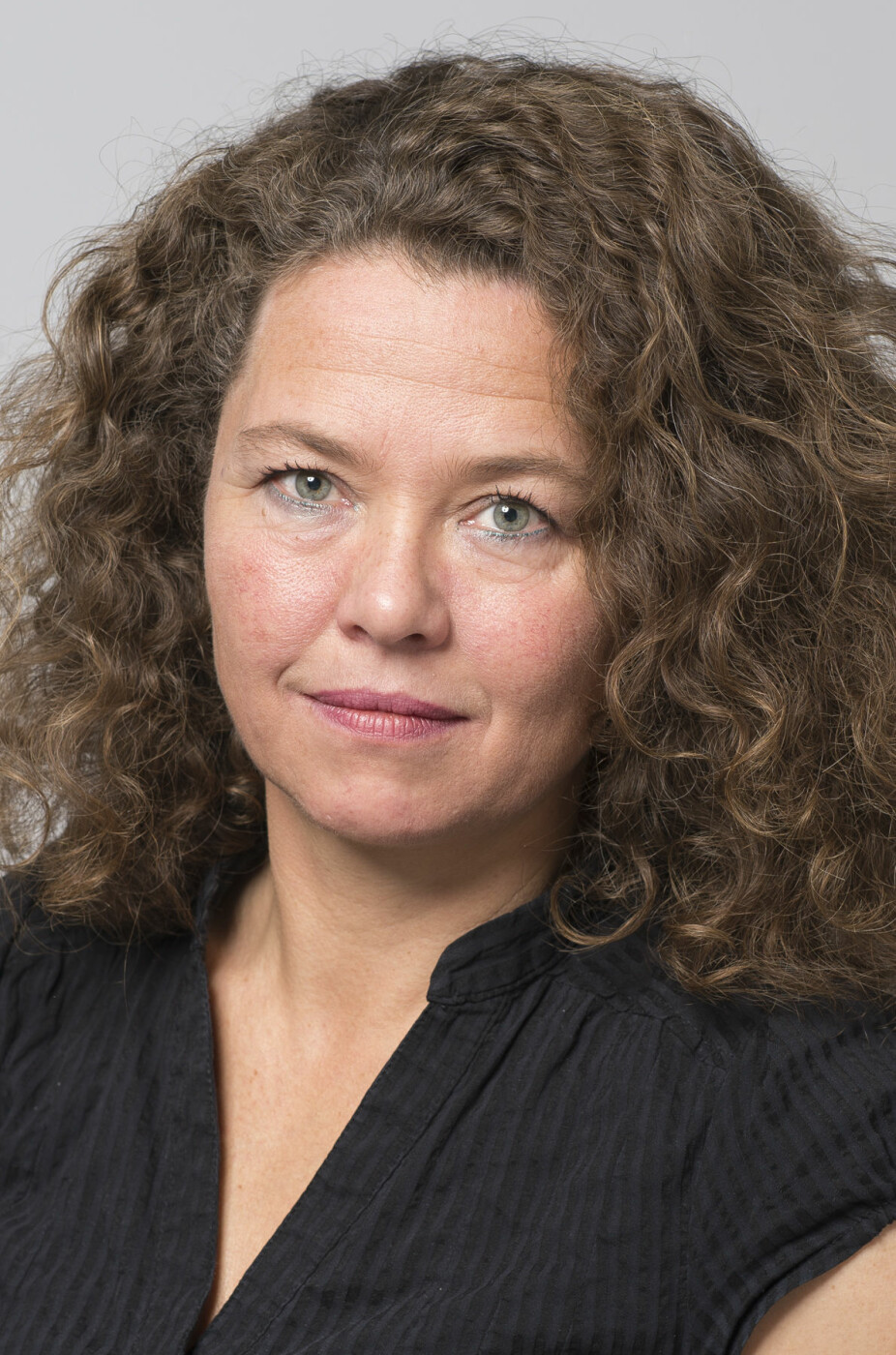
Building larger and better roads results in more traffic, not fewer traffic jams
Road projects in Norway did not reduce congestion, researchers from the Institute of Transport Economics have found.
Norway spends large sums on road construction, especially on access roads for the country’s major cities, such as the E16, E18 and E6. This last is the major north-south road that extends much of the length of the country.
At the same time, the Storting has decided that car traffic in cities should reach zero growth, which means that the total number of cars should not increase.
Instead, all traffic growth should be in the form of public transport, cycling and walking.
Now researchers at the Institute of Transport Economics have looked at the effects of road development in two Norwegian cities, Ålesund (the Blindheim Tunnel) and Oslo (South Corridor).
They have concluded that these two projects resulted in more cars on the road and just as many traffic jams.
“The new capacity was gradually taken up by cars. Gradually, traffic moved more slowly than before, and there were more drivers stuck in traffic bottlenecks. In other words, congestion increased,” says Aud Tennøy, chief researcher at the Institute of Transport Economics (TØI).
Tennøy was one of the researchers behind the Norwegian study, which was just published in the scientific journal Transportation Research.
Why are we building new roads?
"The purpose of building roads today is actually a bit difficult to understand," says Tennøy, who has been studying traffic and mobility in Norway for a number of years.
“It also varies depending upon the roads in question,” she says.
The common arguments for building wider or more roads are that larger roads provide better accessibility for food transport, better traffic safety and an improved local environment.

But perhaps the most important argument, and the one that most people are interested in, is that these roads are supposed to reduce traffic queues and jams.
So why don’t new roads with space for more cars actually do this?
A vicious circle
The answer is urban sprawl, according to the researchers behind the study.
Urban sprawl means that the city grows and spreads out, almost like branches on a tree. The city centre is the trunk and the suburbs are the branches. The problem is that the greater the distance between the branches, and between the branches and the centre, the further out from the trunk they extend.
Similarly, there will be greater distances between people living outside the centre, both between housing and workplaces, but also between housing, workplaces and the city centre.
As cities grow in this way, the need for roads also increases. If you build more roads then the city will just continue to spread out. We thus get a vicious circle where urban sprawl leads to bigger roads and where bigger roads lead to more urban sprawl.
This causes roads to be congested even though new ones are being built.
Places that depend entirely on cars
Tennøy says urban growth is inevitable.
“But the problem is that the kind of growth that is happening now makes us dependent on the car,” says Tennøy. She calls this a car-dependent development pattern.
An example is the large small-housing area around Vestby and Ås, south of Oslo. Here, detached houses, townhouses and commercial areas have been built with relatively large distances between each other.
“New road capacity here contributed to more demand for housing and jobs. The fact that the roads were so accessible to cars created a car-dependent development pattern. And this has contributed to increased traffic, and more queues,” explains Tennøy.
She thinks urban sprawl has a number of negative consequences.
"The most important thing is that it creates more traffic, which increases CO2 emissions, local pollution, noise and traffic danger," says Tennøy.
“But roads also often take over land that is now being used for agriculture, or for natural and outdoor areas. That helps reduce land for food production, biodiversity and areas where people can enjoy the outdoors. More car traffic and less active transport are also negative for public health, and also is more expensive for municipalities as they provide roads, water, sewage, schools and home services,” she said.
Should roads be built to reduce car traffic?
Tennøy and her colleagues believe this information useful for politicians and professionals as they consider whether increased road capacity is a good solution to traffic and environmental problems in urban areas.
They believe politicians should look at things other than road development.
“We know that the recipe for zero growth includes measures such as densification in and near the urban centre, stopping development in the outer areas, strengthening the urban centre, improving public transport, facilitating cycling and walking and introducing restrictive measures to limit car traffic,” says Tennøy.
“Our results show that it will be difficult to reach the zero growth target if we continue to expand road capacity in urban areas. With that in mind, it is interesting to ask why Oslo plans to expand the E18 westwards and the E6 to the east, for example,” she says.
Traffic then and now
The researchers used different methods to come to their conclusions.
First and foremost, they went through figures from the Norwegian Public Roads Administration, which told them how much traffic there was before and after road development, and how often queues and traffic bottlenecks formed.
They also looked at figures from the national travel habits survey that show how people in Norway get around. Statistics Norway also provided information about where people live and where they work.
Tennøy and her colleagues also conducted several interviews with people who had been involved in the projects, including urban planners, architects, developers and municipal employees.
Finally, they went through plan documents and impact assessments for the two road projects.
Not included in the impact assessments
When new roads are planned, Norwegian law requires that an impact assessment be conducted. What are the costs of the development? What are the consequences for the environment and people? And how will the new road affect where we chose to live?
As the researchers went through the impact assessments for the two road projects, they saw that urban sprawl was not mentioned in the Southern Corridor investigation. There it was assumed that increased road capacity would not result in more development in the outer areas than what would have happened anyway, regardless of the development.
“We have examined plan documents related to ongoing capacity expansion plans, and it appears that they also do not take this into account when calculating the effects of the capacity expansions,” says Tennøy.
One of the challenges the researchers encountered during the project was that some of the figures from Statistics Norway did not go further back than 2001. This made it difficult to say whether road development had a significant impact on traffic, especially in Ålesund, since the development there took place in 2002.
Nevertheless, the researchers believe that the study identifies the mechanisms behind road development and increased traffic, and that it is relevant to understanding how to achieve sustainable mobility in and around our cities.
Translated by: Nancy Bazilchuk
Reference:
Aud Tennøy et al: Effects of urban road capacity expansion – Experiences from two Norwegian cases. Transportation Research Part D: Transport and Environment. April 2019. DOI: https://doi.org/10.1016/j.trd.2019.01.024
———
Read the Norwegian version of this article on forskning.no
































